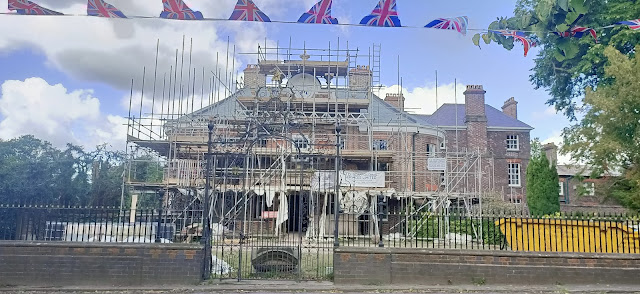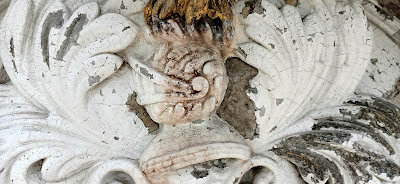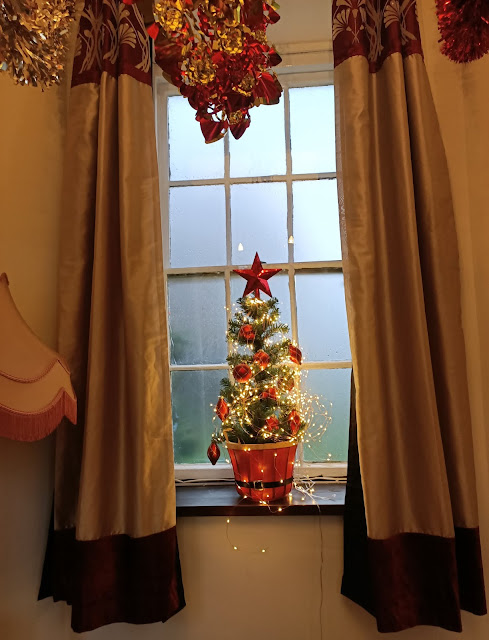A Little Bit of Heraldry
********************************************UPCOMING
EVENT16th July 2023 RESTORATION HOUSE TOURSLAST HOUSE TOURS of 2023. Limited places, £10 pp
www.betleycourtgardens.co.uk/events
for details
*********************************
Providing everything goes well, next week should see the breaking down of the final part of the scaffolding that has covered Betley Court since the end of 2020. It is no exaggeration to say this is quite an exciting time for the Brown family. Bit by bit we are getting ‘our’ Betley Court back. Once the last of the scaffolding is removed, Betley village will also have its ‘big house’ back.
One of the things
that will be most noticeable when the scaffolding comes down is the large white
stone decoration on the front of Betley Court. This is the heraldic
achievement of John Craddock, the founder of Betley Court. It is said that
these heraldic achievements or coats of arms
were developed when suits
of armour became commonplace in the later 1100s. As knights’ faces were
covered, it became important to decorate them so they were easily identifiable
either in battle or tournament.[1]
A whole language of symbols grew up within the heraldry that the initiated
could decipher, yet the uninitiated could still recognise; specific colours, shapes,
and placing of emblems that illustrated the social status of the wearer.
I’m not
going to attempt to explain how heraldry works in this post, but details can be
found HERE. I thought I would pick out some of the symbols in John Craddock’s
coat of arms and explain some of their meaning. When these heraldic achievements
were first devised, Norman French was spoken, as illustrated by some of the
words used.
Craddock's coat of arms after refurbishment
Starting
from the top;
The CREST;
a gold “or” bear’s head erase.
Bear;
symbol of strength. Animals were used to denote personal attributes, the bear -
healing and personal health and bravery. Using gold as a colour points to
status/wealth. The term ‘erase’ means the animals head is depicted separately without
the body.
The HELM
(or helmet) & TORSE (wreath).
Represents
rank and social status. The closed helmet, facing left symbolises lesser
nobility. Also stands for wisdom and security, strength, protection and
invulnerability. The torse (wreath) above the helm represents cloth in
the colours of the family.
The GREEN
MAN
Symbol of
rebirth
ESCUTCHEON/SHIELD;
In the
Craddock’s case, painted argent (silver) or white. This colour is known as the tincture
(the conventional colours or stains used in heraldic shields). The azure
(blue) chevron is a type of ordinaire, a symbol to make the shield
identifiable. It is decorated with three charges in the design of golden garbs (wheat
sheafs)
MANTLING
This is the
leafy decoration that ‘holds’ the design together, in this case stylised
fleur
de lys ‘flower of light’
Within the
mantle, there are other symbols pointing to other meanings in heraldry:
The Rose; a symbol of hope and joy
& Wheaf sharf
(or sheaf) – called a garb in heraldry. Means abundance and hope
Grapes; symbolise happiness, bliss and peace. Fruits of all kinds were considered Proof of God’s goodness
Scrolls: a symbol of learning
Should you be passing Betley Court once the scaffolding is down, do take a moment to glance up, and decipher John Craddock’s coat of arms for yourself .
All best
wishes
Ladybird Su

.jpeg)




.jpg)
.jpg)

.jpg)


Comments
Post a Comment